
The leaves are nearly sessile to short-petioled; their petioles are slightly winged and sparsely short-pubescent. The central stem and lateral stems terminate in racemes of flowers with leafy bracts that are about ½–1¼' long. The leafy bracts are ¾–2½" long and ¼–¾" across; these bracts are lanceolate or elliptic in shape and they usually have 2 or more shallow to moderately deep lobes, although some bracts may lack lobes. Except for their smaller size and fewer lobes, the leafy bracts are similar to the leaves below the floral racemes. Individual flowers are about 1½–2¼" long, consisting of a large yellow corolla with 5 spreading lobes, a light green calyx with 5 ascending to spreading lobes, 4 stamens, and an ovary with a single slender style. The corolla is tubular-campanulate (tubular and bell-shaped) in shape, becoming wider towards its mouth; it has a hairless exterior. The lobes of the corolla are oval-orbicular in shape, slightly overlapping, and similar in size. The calyx tube is about ½–¾" long, campanulate in shape, finely ridged, and covered with short fine pubescence.
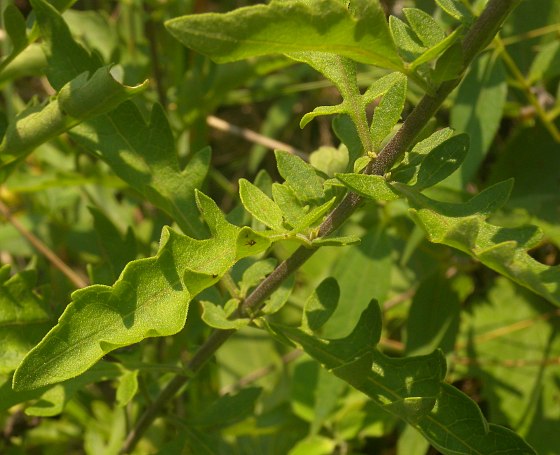
The lobes of the calyx are elliptic or lanceolate in shape, medium green, and sparsely covered with very short pubescence. The central stalks of the racemes and pedicels of the flowers are light green, terete, and pubescent. In addition, the pedicels are 3-8 mm. long and upturned when the flowers bloom, becoming somewhat longer afterwards when the seed capsules develop. The blooming period occurs from mid-summer to early autumn, lasting about 1–1½ months. There is no noticeable floral scent. Afterwards, the flowers are replaced by ovoid-globoid seed capsules about ½–¾" long that are brown and glabrous. The capsules eventually split open to release theirs seeds. These seeds are about 2 mm. long, ellipsoid-oblong in shape, somewhat flattened, and slightly winged. The root system consists of a caudex with fibrous roots, some of which attach themselves to the roots of trees in the white oak group, from which they withdraw water and nutrients. As a result, this plant is a hemiparasite (partially parasitic).
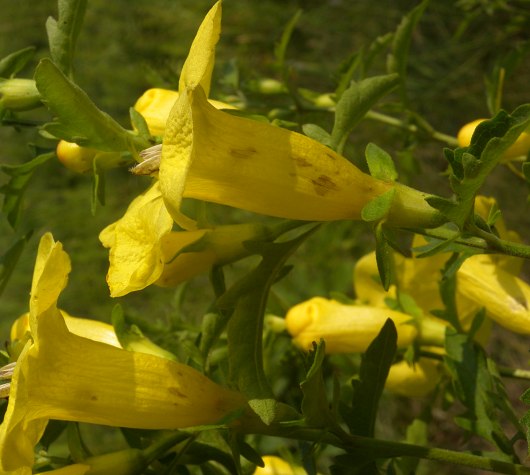
Cultivation: The preference is partial sun, mesic to dry conditions, sandy loam, clay-loam or rocky soil. The seeds should be planted near a host plant (a tree in the white oak group). This plant will not harm its host plant to any significant degree if the latter is larger in size than a sapling.
Range & Habitat: Large-flowered False Foxglove (Aureolaria grandiflora) is occasional in western and northern Illinois, while in the rest of the state it is uncommon or absent (see Distribution Map). Illinois lies along the eastern range-limit of this plant. Its range occurs primarily in north-central and south-central USA. Habitats include upland oak savannas, edges of limestone glades, thinly wooded bluffs, open woodlands, woodland borders along roadsides, and wooded slopes at the edges of fens. This plant is found in habitats where trees in the white oak group are present in slightly disturbed to high quality natural areas.
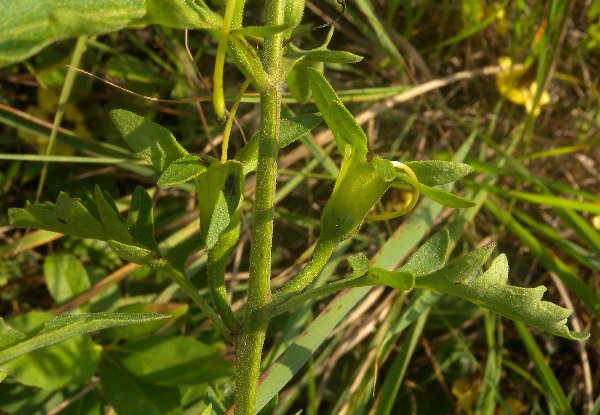
Faunal Associations: The nectar and pollen of the flowers attract primarily bumblebees. Other floral visitors include the Ruby-throated Hummingbird, long-horned bees (Melissodes spp.), leaf-cutting bees (Megachile spp.), Halictid bees (Lasioglossum spp.), and Syrphid flies (Robertson, 1929). Syrphid flies, which feed on the pollen, are unlikely to be effective at cross-pollinating the flowers. Other insects feed on either the foliage, sap, or developing seeds of False Foxgloves (Aureolaria spp.). These insects include the larvae of two butterflies, Euphydryas phaeton ozarkae (Baltimore) and Junonia coenia (Buckeye), and the larvae of two moths, Pyrrhia aurantiago (Orange Sallow) and Endothenia hebesana (Verbena Bud Moth). Other insects that have been observed to feed on False Foxgloves include an aphid, Aphis gerardiae, and a skeletonizing leaf beetle, Kuschelina horni.
Photographic Location: Beside an oak tree in a savanna not far from the edge of a fen in Lake County, Illinois.
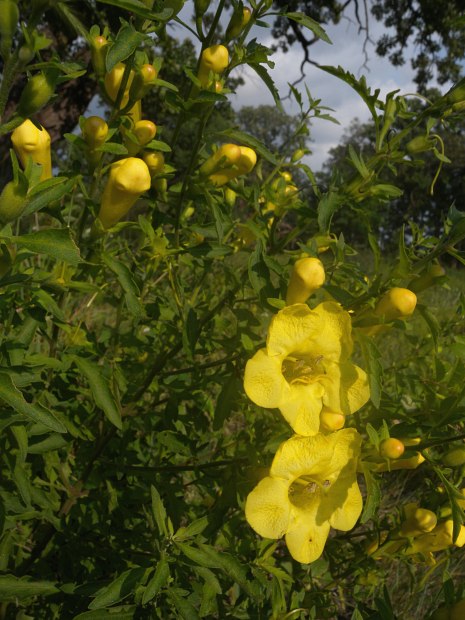
Comments: Large-flowered False Foxglove (Aureolaria grandiflora) is one of three Aureolaria spp. in Illinois, although there are additional species outside of the state further to the east and south. They are all hemiparasites on the roots of other plants, especially oaks (Quercus spp.). Smooth False Foxglove (Aureolaria flava) has a similar appearance to Large-flowered False Foxglove, except it has hairless stems, hairless pedicels, and hairless calyces on its flowers. In addition, the leafy floral bracts of Smooth False Foxglove are more likely to lack teeth or lobes along their margins. Another species, Fern-leaved False Foxglove (Aureolaria pedicularis), has smaller-sized flowers (1–1½" long) and it is more likely to occur in sandy places where trees in the black oak group occur. The leaves of this latter species are more likely to be bipinnatifid, while the lobes of its calyces are toothed or lobed themselves, instead of smooth along their margins.
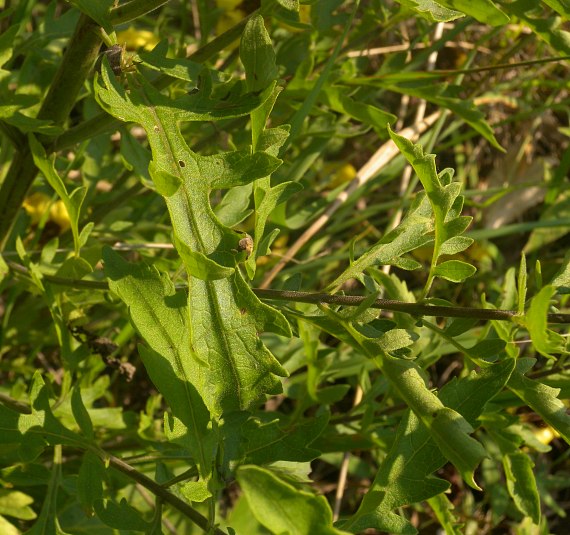
Downy False Foxglove (Aureolaria virginica) doesn't occur in Illinois, although it is found in neighboring Indiana. This latter species also has a similar appearance to Large-flowered False Foxglove, except its middle to upper leaves are less lobed or unlobed, and the pedicels of its flowers are shorter (only 1-3 mm. long). The flowers of Downy False Foxglove also tend to be a little shorter in length (1¼–1¾"). Across its range, Large-flowered False Foxglove has been divided into different varieties by some authorities. So far, the only variety that has been reported from Illinois is Aureolaria grandiflora pulchra. At one time, Aureolaria spp. were classified in the Gerardia genus. Thus, a scientific synonym of Large-flowered False Foxglove is Gerardia grandiflora. Another common name for this species is Western False Foxglove, because its range doesn't extend as far to the east as other Aureolaria spp. in eastern North America.